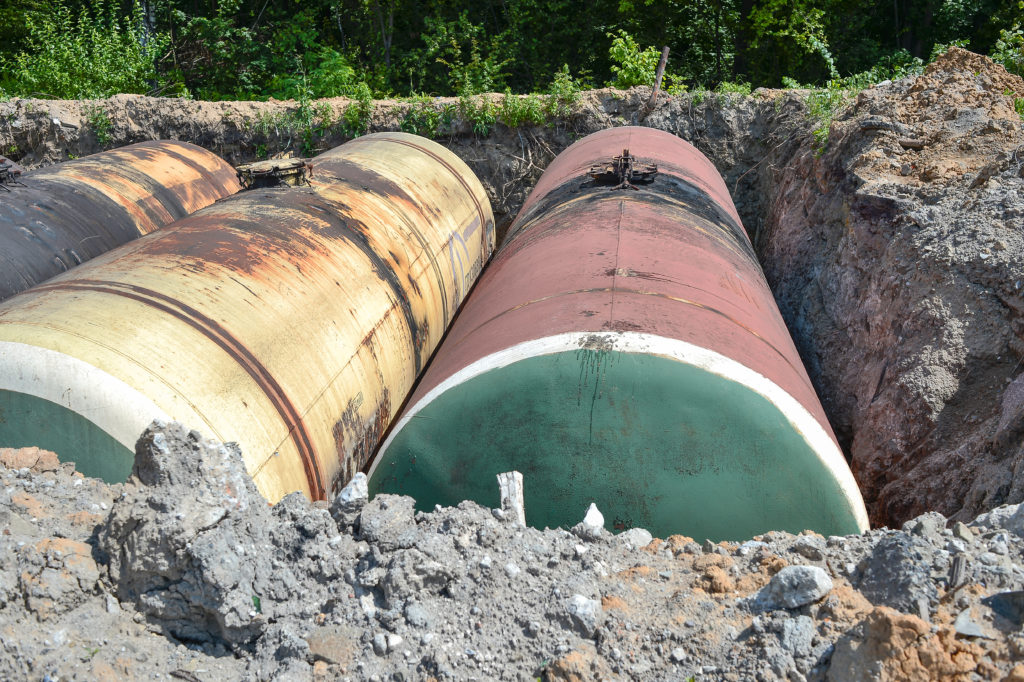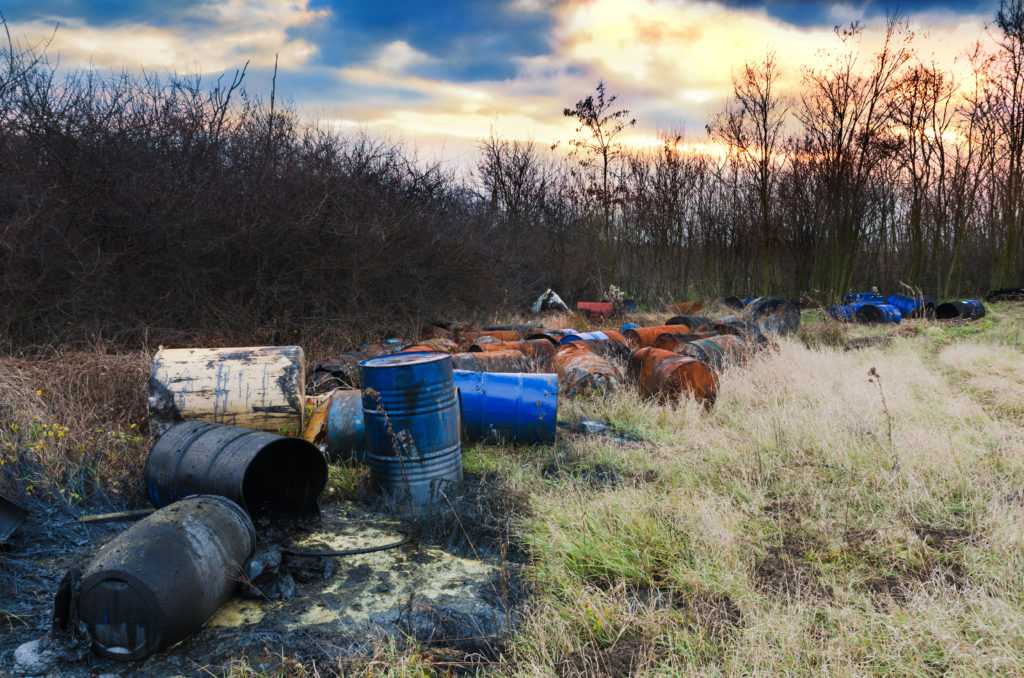TCEQ Environmental Programs
The Texas Commission on Environmental Quality (TCEQ) has promulgated legislation through the Texas Administrative Code (TAC) to address investigating, reporting, and cleanups of releases of petroleum products, hazardous chemicals, and related wastes through two programs:
- The Leaking Petroleum Storage tank (LPST) program is under Title 30 TAC Chapter 334
- The Texas Risk Reduction Program (TRRP) is under Title 30 TAC Chapter 350
TCEQ Leaking Petroleum Storage Tank Program (LPST)

Cleanups of contamination that are caused by spills, leaks, or other releases of petroleum substances or hazardous substances from regulated underground and aboveground storage tanks is regulated by the Texas Commission on Environmental Quality (TCEQ).
The TCEQ administers two steps toward identifying and responding to releases from leaking petroleum storage tanks (LPSTs) in Texas through two regulatory guidance documents:
1.Regulatory Guidance Document RG-411 Investigating and Reporting Releases from Petroleum Storage Tanks (PSTs)
a) This regulatory guidance document pertains to the requirements for investigating and reporting releases from underground and aboveground storage tanks that are suspected or confirmed to have leaked petroleum products or hazardous substances.
b) This regulatory guidance document allows the user to determine whether or not a release is “suspected” or “confirmed”, and also allows a responsible party from “screening out” of the LPST program requirements if the release investigation findings support no further action.
2. Regulatory Guidance Document RG-523, Risk Based Corrective Action for LPST Sites
a) The first step is a Plan A evaluation, where the RCAS and CAPM compare the site’s maximum contaminant concentrations to the conservative pre-established target concentrations for the beneficial-groundwater-use category and land use applicable to the site. If contaminant concentrations are at or below Plan A target concentrations, the site may be eligible for “closure,” meaning that no more assessment or remediation is warranted. Sites that do not screen for possible closure under Plan A evaluation are further evaluated using the exit-criteria flow charts available in the guidance document entitled “Risk-Based Corrective Action for LPST Sites” (RG-523/PST-03).
b) If the site does not meet closure requirements during the exit-criteria evaluation, the open exposure pathways are further evaluated under a Plan B evaluation. The RCAS and CAPM develop target concentrations based on the geologic and hydrologic conditions and the actual receptor information for each site. Remediating a site to target concentrations often saves money and time, compared to the more conservative Plan A target concentrations. The development of a CAP is necessary if concentrations exceed the established target concentrations as determined in the Plan B report.
To learn more about the Leaking Petroleum Storage Tank Program please visit the TCEQ’s website at: https://www.tceq.texas.gov/remediation/pst_rp/pst.html
Texas Risk Reduction Program (TRRP)
 The Texas Risk Reduction Program (TRRP) rule (30 TAC 350) provides consistent procedures for investigating environmental releases from any source that threaten or affect groundwater, surface water, or sediment. A key aspect of TRRP is the tables of protective concentration levels (PCLs), which provide default values of maximum chemical concentrations that can exist in the soil or water without requiring further corrective action. Regulatory Guidance document RG-366 titled “Application of Remedy Standards A and B”.
The Texas Risk Reduction Program (TRRP) rule (30 TAC 350) provides consistent procedures for investigating environmental releases from any source that threaten or affect groundwater, surface water, or sediment. A key aspect of TRRP is the tables of protective concentration levels (PCLs), which provide default values of maximum chemical concentrations that can exist in the soil or water without requiring further corrective action. Regulatory Guidance document RG-366 titled “Application of Remedy Standards A and B”.
- Remedy Standard A- Remedy Standard A is a “pollution cleanup” remedy that requires the affected media to be removed and/or decontaminated.
- Remedy Standard B- Remedy Standard B is an “exposure prevention” remedy and allows removal, decontamination, and control remedies or control remedies alone.
To learn more about the TCEQ TRRP programs, please visit the TCEQ’s website at: https://www.tceq.texas.gov/remediation/trrp/trrp.html
Two of the programs regulated under TRRP include the Voluntary Cleanup Program (VCP) and the Innocent Owner Operator Protection (IOP) Program.
TCEQ Voluntary Cleanup Program (VCP)
The Texas VCP provides administrative, technical, and legal incentives to encourage the cleanup of contaminated sites in Texas. Under the VCP, site cleanups follow a streamlined approach to reduce future human and environmental risk to safe levels. The VCP Offers Many Benefits and Incentives to Site Cleanup.
- VCP cleanup are more lenient than TCEQ environmental enforcement for responsible party remediation.
- VCP allows owners of impacted properties to clean-up their sites prior to sale or transfer of ownership.
- VCP facilitates incentives for bona fide prospective purchasers to purchase and cleanup sites that may have been inactive for years.
- VCP facilitates commercial lending and/or cash sales by allowing property owners to enter the sites into financing or other agreements.
 TCEQ Innocent Owner/ Operator Program (IOP)
TCEQ Innocent Owner/ Operator Program (IOP)
The Texas Innocent Owner/Operator Program (IOP), Provides a certificate to an innocent owner or operator if their property is contaminated as a result of a release or migration of contaminants from a source or sources not located on the property, and they did not cause or contribute to the source or sources of contamination.
Like the Texas Voluntary Cleanup Program (VCP), the IOP can be used as a redevelopment tool or as a tool to add value to a contaminated property by providing an Innocent Owner/Operator Certificate (IOC). The following tips would help avoid the pitfalls many others encounter when purchasing or selling a commercial property.
- Always perform thorough Environmental Due Diligence (Phase I and Phase II) prior to purchasing a property.
- If selling the property, the buyer usually must pay for this as well.
- Make sure you have retained an environmental consultant who has the necessary professional licenses, experience, and understanding of the correct ways to correctly assess your site.
To learn about the Texas Environmental, Health, and Safety Audit Privilege Act, Click Here
Becoming Eligible for Immunity
To become eligible for immunity, the innocent owner or operator must grant reasonable access to the property for future investigation or remediation, agree on necessary restrictions to protect human health and the environment, if appropriate, and demonstrate that:
- Contamination source is not located on or at the property or caused by the owner or operator.
- New owner did not acquire the property from the person that caused the release
- If the property was purchased from the owner of the source property after September 1, 1997, the effective date of the IOP law, the applicant must demonstrate he did not know that the property was contaminated at the site it was acquired.
- The property has become contaminated because of a release or migration of contaminants from a source or sources not located on or at the property;
- Current owner/ operator has not caused or contributed to the source or sources of the contamination;
- He or she did not acquire the property from the person that caused the release; or if the property was purchased from the owner of the source property after September 1, 1997, the effective date of the IOP law, the applicant must demonstrate he did not know or have reason to know of the contamination at the time the property was acquired.
If the owner/operator is eligible to receive an IOC from the TCEQ. Parties may terminate their participation in the IOP at any time by written notice to the program.
IOP Tip
Avoid the pitfalls many others encounter when purchasing or selling a commercial property. Past uses of a site may have impacted soil, groundwater, or surface water. Be sure to retain an experienced, licensed, and insured Environmental consultant to properly assess the site, and determine your potential environmental liabilities before closing. A thorough and properly conducted Environmental assessment may also reduce the risks involved when selling a parcel of land.
- Always perform the necessary Environmental Due Diligence (Phase I and Phase II) prior to purchasing or refinancing a property.
- If selling the property, the buyer usually must pay for this as well.
- Make sure you have retained an environmental consultant who has the necessary professional licenses, experience, and understanding of the correct ways to correctly assess your site.

 TCEQ Innocent Owner/ Operator Program (IOP)
TCEQ Innocent Owner/ Operator Program (IOP)